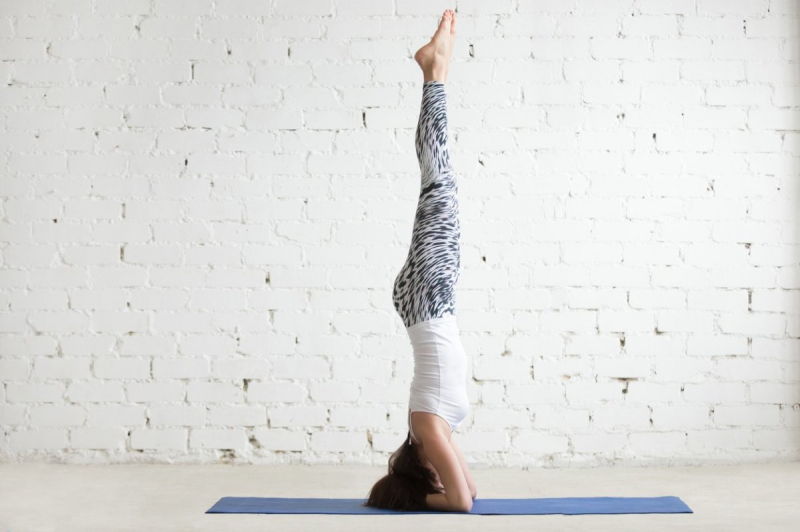Headstand (Sirsasana)

The first pose to mention among the 12 basic yoga poses is Headstand or Sirsasana. Headstand (Sirsasana) is a balancing pose that requires you to balance on your elbows, arms, and head. śīrṣa stands for the head. The Headstand is the first in the sequence and is known as the "King of Sanas" due to its numerous benefits. "Head-stand is a panacea, a cure-all, a sovereign specific for all diseases," according to Swami Sivananda.
The brain benefits from being upside down in this āsana because it draws plentiful oxygen-rich blood from the heart. It helps with meditation practice since it improves memory and attention. This posture allows more energy to go to the head. The headstand energizes the ājñā cakra while directing energy to the maṇipūra cakra.
The position enhances circulation, strengthens the heart and respiratory system, improves memory, concentration, and mental capacity, and promotes relaxation. The senses are enhanced and the brain, spinal cord, and sympathetic nervous system are energized. The pituitary and pineal glands are activated, reviving the mind and body as a whole. Inversion therapy treats varicose veins, constipation, psychological disorders, and anxiety. It also improves sleep quality and boosts confidence.
Step by step:
- In Tabletop, begin on your hands and knees. Place your forearms on the floor in front of you as you lean forward. Cupping your palms, bring your hands together and interlace your fingers.
- Place the crown of your head on the floor and your back against your cupped palms. Allow your head to rise slightly off the floor by pressing down with your forearms and elbows.
- Tuck your toes, straighten your legs, and elevate your knees. Then, as you come in toward your head, make sure your hips are straight above your shoulders.
- Bend your knees and use your core to raise or jump your hips and legs off the floor while keeping your weight on your arms (not your head!). Lift your legs up so they are directly over your shoulders, keeping your legs together and knees bent.
- Find your balance in this position, moving your weight as needed.
- As you straighten your legs, hug your thighs together.
- Stay up as long as you feel safe and capable. To release, slowly lower your feet to the floor using your core strength.
Beginner’s Tips:
- Make use of assistance. Practicing against a wall or in a doorway is a good idea. As you gain strength and balance in the position, move one foot away from the wall, then the other.
- Begin small. Try to stay up for 10 seconds, then progressively increase the time by 5 to 10 seconds. Holding a good 20-second pose is preferable to a three-minute pose with no integrity.
- Exit gracefully. Lower your legs in a fluid motion using your abs. With an inhale, lower yourself without losing the lift in your shoulder blades.
Common Mistakes
- You're kicking it up a notch. You don't want to kick up into the headstand, so keep your motions under control.
- Your body weight isn't evenly distributed. Your forearms are also bearing weight, despite the fact that it's considered a headstand. If you're having difficulties figuring out how to distribute your weight properly (which will vary from person to person), consider putting a blanket under your forearms for support.
- You're moving way too quickly. Doing a headstand incorrectly or rushing through the steps to get into (or out of) the position can cause serious injury, regardless of your yoga experience or fitness level. Slow down, keep focused, remember to breathe, and pay attention to your body on a regular basis.












